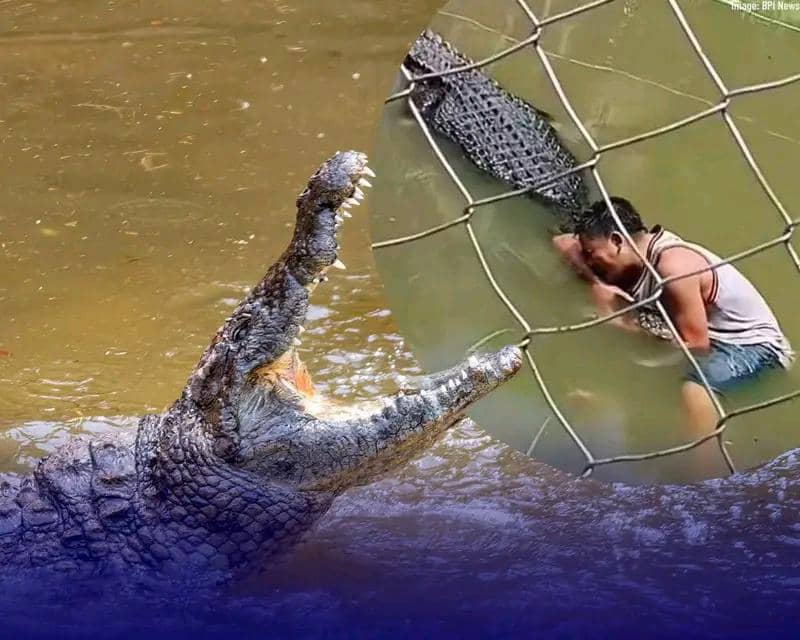By Burnett Munthali
A 29-year-old man is lucky to be alive after a near-death encounter in a crocodile enclosure that has left many people stunned and questioning the power of human judgment.
The shocking incident occurred when the man climbed into the enclosure under the illusion that the 15-foot crocodile lounging motionless before him was nothing more than a harmless statue.
Unaware of the danger he was walking into, the man approached the reptile casually, possibly intending to take a closer look or even pose for a picture.
What happened next could have easily turned into a tragedy, as the crocodile, alert and very much alive, lunged at the man with lightning speed.
Eyewitnesses reported screams and frantic movement as the man scrambled to escape the jaws of the massive predator.
Miraculously, he managed to flee the enclosure with only minor injuries, escaping what could have been a fatal attack.
This bizarre incident has sparked outrage and concern among park officials and wildlife experts, who stress the importance of obeying safety signs and respecting wild animals.
A video of the encounter, described as “pretty brutal,” is circulating online, though some viewers are hesitant to share it due to its disturbing content.
For those familiar with the tourism industry, especially in wildlife parks and zoos, the man’s mistake comes as no surprise.
According to one former tourism worker, it is a constant occurrence for tourists to underestimate the reality of the animals they are viewing.
Tourists often make light-hearted but dangerously ignorant remarks, claiming the animals are fake, animatronic, or simply “too still to be real.”
Some visitors are only convinced once one animal moves — then they assume only that one is real, while the others are props.
This disbelief and casual attitude toward potentially deadly creatures reflect a larger problem in the way some people engage with nature and the boundaries set for their safety.
It also exposes the limitations of signage and warnings when curiosity or arrogance takes control over logic and caution.
As the late comedian George Carlin famously said, “Think of how stupid the average person is, and realize half of them are stupider than that.”
That quote, while humorous, points to a sobering truth about the risks posed by underestimating danger and overestimating one’s own judgment.
While it’s easy to laugh at the absurdity of mistaking a living crocodile for a sculpture, the reality is that this kind of lapse in awareness could have easily cost the man his life.
The incident serves as a grim reminder that wild animals are not playthings, and boundaries are there for a reason — to protect both people and the creatures themselves.
Park management has since reviewed safety protocols, warning signs, and visitor education to prevent such an incident from happening again.
Meanwhile, the man involved has not yet made a public statement, but many hope his story will serve as a cautionary tale for others.
In a world increasingly dominated by selfies and viral moments, the cost of a bad decision in a wildlife setting is simply too high to ignore.




